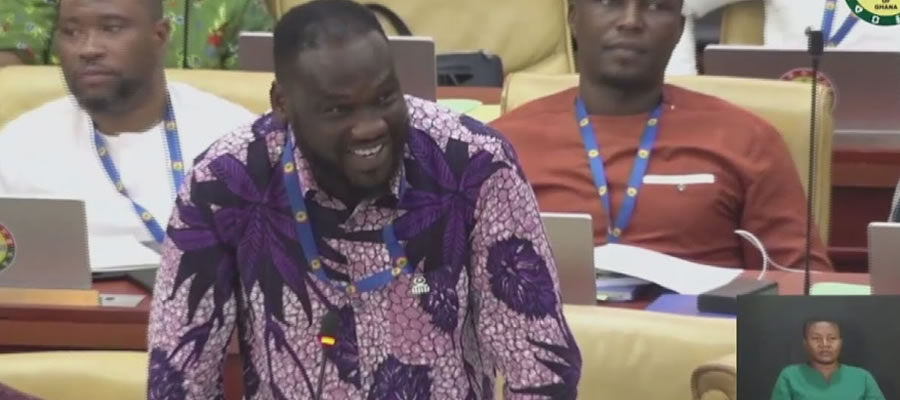

Vulnerability Analysis
Vulnerability
may be defined as lack of capacity (of a household) to cope with
adverse shock on resilience against a shock. Or it may be defined as the
probability that livelihood stress would occur. Groups that have been
identified in the Municipality as vulnerable and excluded include women,
children, and persons with disability, orphans, PLHIV and the aged.
Several factors have been identified as the cause of vulnerability in
the Municipality. Among these
factors are subsistence farming, the vagaries of weather, dependence on
agriculture on rain fed, food insecurity, inadequate access to credit,
and lack of employable skills, child labour, broken home, low income,
unemployment and underemployment.
The Municipality has benefited from a Community based Rehabilitation pilot project set up by the mother Municipality (Asante Akim Central Municipality) in six (6) selected communities in collaboration with the department of Social Welfare and Community Development to assist in the training and empowering of the vulnerable/excluded. The project has been expanded to all the communities in the district where ninety (90) physically challenged persons were identified and registered. Other programmes implemented by the Assembly to support the vulnerable included, provision of financial support to promote girl-child education. The details are shown in a table below:
HIV/AIDS
The
HIV/AIDS epidemic is a global crisis and constitutes one of the most
formidable challenges to development and social progress. HIV/AIDS is a
development issue with consequences far beyond the health sector. It is
therefore very crucial to seek appropriate solutions. The District
Health Management Team (DHMT) is leading the crusade to fight the
endemic in the district.
There
is an established Anti-Retroviral Therapy (ART) centre of Agogo
Hospital in 2004 but was officially adopted by the National Aids Control
Programme (NACP) in 2007. The ART Centre had a membership of five (5)
patients. By the end of 2013, the ART centre have registered (959)
patients who are receiving ART clinical care.
Generally, records available show that women are more susceptible to HIV/AIDS than men. Out of 90 people who tested HIV positive in 2011, Fifty Seven (57) were females whilst Thirty three (33) were males.
Programs used at the art center,
1. Voluntary Counselling and Texting – VCT
2. HIV testing and Counselling – HTC
3. ART Services
4. Prevention of Mother to Child Transmission – PMTCT
5. Outreach services including Radio Talk shows
6. Treatment of opportunistic Infection (O.K)
Officers handling HIV and AIDS
1. One (1) Physician Specialist
2. One (1) Physician Assistant
3. Adherence Counsellor
4. Two (2) Nurses
5. Data Officer
6. HIV and AIDS Co-ordinator at the Hospital
7. District HIV and AIDS Focal Person
8. There are also trained counsellors at various wards in the Agogo hospital.
Achievements
· Fifteen (15) infants whose mothers went through PMTCT successful tested Negative for the Early Infants Diagnosis
(EID) when samples were taken for PCR.
· Ten Health workers who accidental occupational injuries went through post exposure prophylaxis (PEP) successfully
and all tested negative.
Challenges
Logistic constraints: the community/Home Based service has suffered serious setbacks all because of inadequate logistics.
· Support for the extremely poor patients who cannot even afford a day’s meal and means of transport to attend the
clinic are not forthcoming.
· Lack of financial assistance from the Central Government to organize behavioral change communication.
Gender
Gender
has become one of most pressing issues in the district because of
gender disparity. In view of this, the District has integrated gender
issues into the entire spectrum of its programmes and activities in
order to foster good gender relations for mutual respect between the
gender and eliminate gender disparity. This will ensure that women have
access to information and services and exercise their responsibilities
and also to address socio- Cultural factors underlying discrimination
based on sex.
Besides this the Municipality
has made progress toward 3rd MDG target by promoting gender equality and
empowerment of women by eliminating gender disparity and promoting the
involvement of women in decision making through workshop/education.
Females contribute large number of people in the Municipality. But in almost all issues relating to the development of the Municipality, women are not actually well involved as men. Females are vulnerable in the Municipality than men. The following analysis attests to that fact.
Poverty in the Municipality
for instance has important gender dimension. The incidence of poverty
is more stinking among females who also constitute 51.3 percent of the
district’s population. Women have heavier time burdens, lower rates of
utilisation of productive resources and lower literacy levels.
Disparities with respect to access to and control of a range of the Municipality
productive assets such as land, credit, education and human and social
assets. Participation at various levels of decision making are skewed
against women in the district.
Socio–cultural
factors and practices such as funeral arrangements and inheritance
systems continue to perpetuate the gender inequalities in assess and use
of services.
Unemployment is higher among females compared to males in the Municipality. Statistics
indicate that 5.1 percent of females are unemployed within the female
population aged 15 years and older whilst 4 percent of males are
unemployed within the male population aged 15 years and older.
Females account for 9.4% of the total membership of the Municipal Assembly as against 90.6% males. Out of 32 Assembly members, 2 are females whilst 29 are males.
Date Created : 11/21/2017 7:19:35 AM












 facebook
facebook
 twitter
twitter
 Youtube
Youtube
 +233 593 831 280
+233 593 831 280 0800 430 430
0800 430 430 GPS: GE-231-4383
GPS: GE-231-4383 info@ghanadistricts.com
info@ghanadistricts.com Box GP1044, Accra, Ghana
Box GP1044, Accra, Ghana